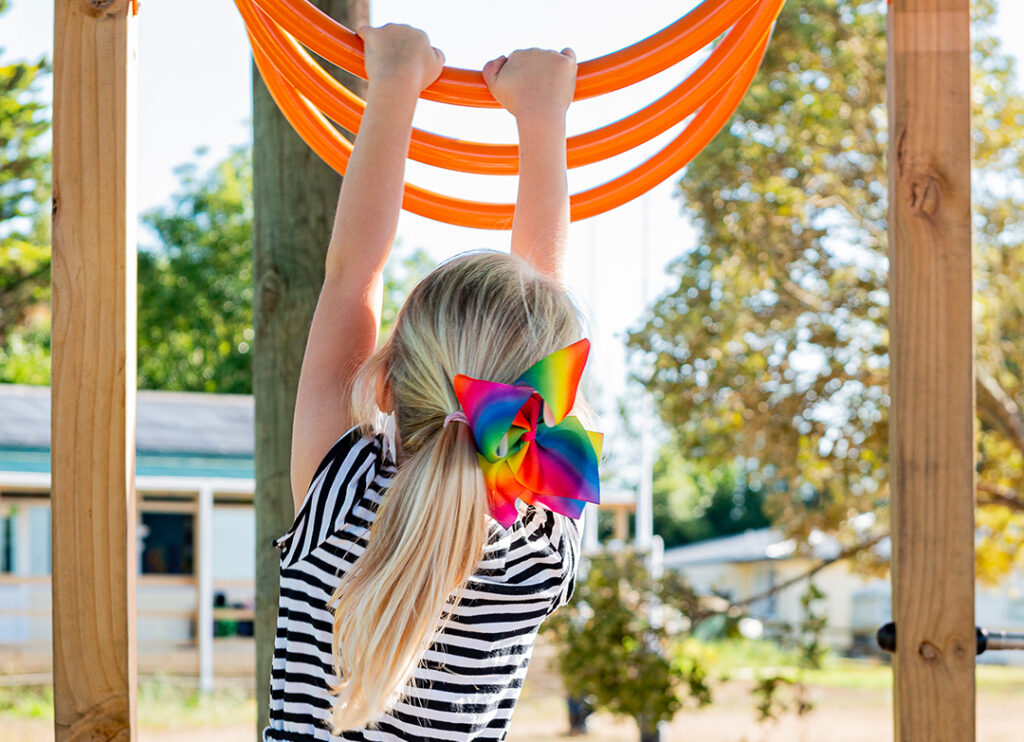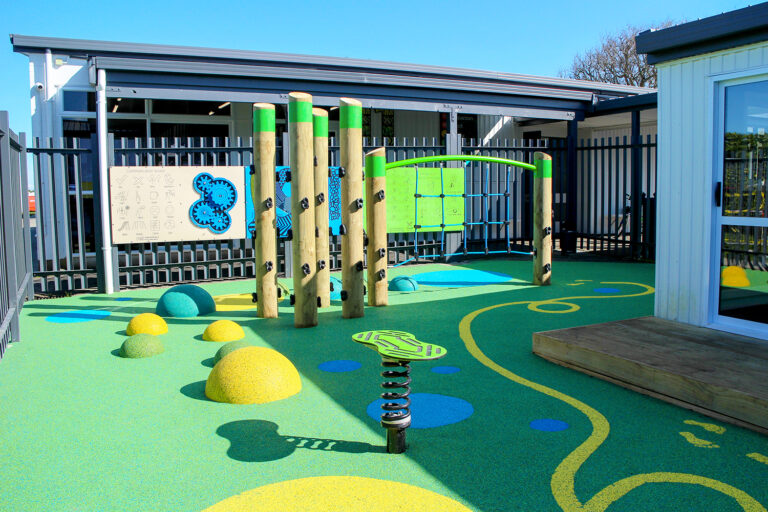The concept of ‘play for all’ is transforming playground design, moving beyond basic accessibility to embrace neurodiversity. We’re recognising that playgrounds should cater to the cognitive experiences of every child, and not just those with typical sensory processing.
Recent research indicates that approximately 15-20% of the world’s population is neurodivergent, meaning roughly one in five children require play spaces that are designed with their unique needs in mind. To truly achieve this, we must acknowledge that play is a deeply personal experience, and diverse options are essential. The most effective approach involves collaborative design, working closely with neurodiverse communities and experts who understand their specific requirements.
Let’s take a look at some key design considerations to create truly inclusive playgrounds:
Clearly Defined Spaces:
The layout of a playground can significantly impact neurodiverse children, who often struggle to grasp spatial relationships and visualise their own interactions. This difficulty can lead to anxiety, especially when transitioning between spaces, such as at entry points. To alleviate this, providing clear functional definitions for different playground areas creates a sense of structure, which helps to reduce stress and facilitates participation. Enhancing the design’s clarity through the use of textures, colours, barriers, or planting beds further improves accessibility, making the space easier to navigate and less overwhelming.
Varied Activity Groupings:
By deeply understanding that children with autism or Sensory Processing Disorder (SPD) experience sensory and social interactions differently when entering a play space, we can recognise that offering them choices is the most effective way to empower them. By thoughtfully separating noisy and quiet activity areas, we allow children to regulate their sensory input, selecting environments that suit their individual needs. Incorporating teamwork-based equipment like seesaws encourages social interaction, creating a balanced and inclusive play experience.
Diverse Design Options:
Meeting individual needs requires a broad range of choices, encompassing spaces, activity levels, and designs. Incorporating sensory cues like quiet vs. loud, still vs. moving, bright vs. muted, simple vs. complex, and many vs. few people allows for greater accessibility. Quiet pathways that lead to calm areas are essential, preventing forced exposure to overwhelming sensory environments. Only through embracing diverse designs can we effectively meet a full spectrum of needs.
Orientation and Communication:
For children with autism, entry points to a busy playground can be overwhelming, requiring them to assess how to navigate the space. Providing orientation map and quiet observation areas helps children understand the layout before participating. Perimeter paths and clear lines of sight facilitate navigation, while seating at entrances allows for peer observation, increasing a sense of control and security. Sensory orientation maps outlining space functions and activities, accompanied by website links for parent information, are vital in easing anxiety, especially for newcomers.
Calm Retreats:
When the sensory input of a busy playground becomes overwhelming, it’s essential to provide children with quiet, calming spaces. These can include cubbies and secluded areas situated along the playground’s perimeter or within nature-integrated play spaces. These retreats offer a peaceful escape from the main activity, allowing children to regulate their sensory experience and recharge in a calm environment.
Multi-Sensory Play:
Consider all eight senses during the design process, with a strong focus on touch, sound, balance, and body movement. Distributing play equipment that promotes balance and gross motor skills throughout the playground allows children to engage in a variety of sensory activities, which supports their overall development and allows for a fun experience.
Perimeter Safety:
Recognising that neurodiverse children can become intensely absorbed in play, often to the point of wandering, many parents avoid playgrounds that lack perimeter fences. By strategically integrating fences around play and breakout areas, including shelters and BBQ spaces, we can provide a significant additional benefit to caregivers. This not only prevents children from wandering, but also gives caregivers a sense of security, knowing they can easily maintain visual contact, which allows them to experience greater peace of mind during their children’s play time.
Soothing Colours and Patterns:
Choosing neutral colours, especially natural and muted tones, is a thoughtful design consideration for children that might be sensitive to visual input. Similarly, avoiding repetitive geometric patterns and stripes can help to alleviate visual stress for children with visual processing challenges. It’s important to recognise that the often-used bright colours and intricate patterns in playgrounds can be overwhelming, potentially leading to fatigue and sensory overload for some children. That said, a purely muted environment can lack stimulation for others, reiterating the importance of creating diverse zones within the space. By creating areas with varying levels of visual intensity, we can cater to a wider range of needs.
Accessible Surfaces:
Recognising the diverse sensory and physical needs of children, playground design should consider a variety of surface options. While uneven textures like bark mulch or sand can be challenging for some, smooth, flat surfaces like rubber softfall offer a number of benefits. By strategically placing rubber softfall in key zones, we can provide sensory-friendly surfaces for children with SPD, enhance stability for those with balance difficulties, and ensure wheelchair accessibility to specific play equipment.
Facilitating Social Interaction:
To promote inclusive social interaction, particularly for children with limited verbal communication, communication boards are a vital addition to the play space. Because neurodiverse children exhibit a wide range of traits and behaviors, designing for them requires a more holistic approach. This involves providing diverse choices, spaces, and activities, while also thoughtfully addressing the specific needs and triggers of each child, as outlined previously.
The power of play to transform lives is undeniable. Designing with neurodiversity in mind isn’t just about building playgrounds, it’s about building a foundation for empowerment. By providing spaces where every child feels safe, understood, and celebrated, we’re encouraging self-confidence, resilience, and a sense of belonging. These experiences extend beyond the playground, shaping how children interact with the world and how they perceive their own potential. Investing in neurodiverse play is investing in a more inclusive future, where differences are embraced, and every child has the opportunity to thrive.
Let’s move beyond simple accessibility and create playgrounds that are not just functional, but transformative – spaces where every child can experience the joy, connection, and developmental benefits of play, regardless of their neurotype.













